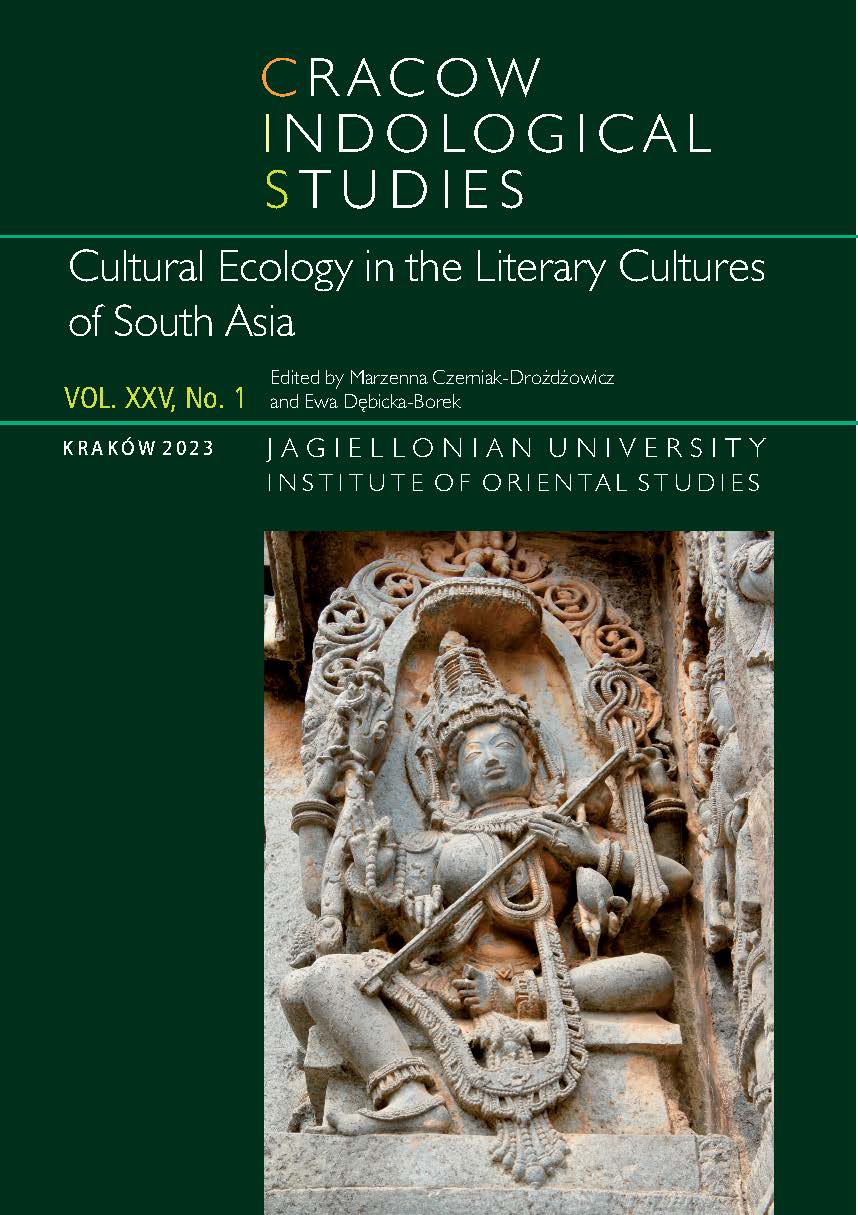Indra-kaví
Ṛgvedic Lordship, Bovine Environment, and Onomatopoeic Poetry
Indra-kaví
Ṛgvedic Lordship, Bovine Environment, and Onomatopoeic Poetry
Author(s): Paola M. RossiSubject(s): Customs / Folklore, Cultural Anthropology / Ethnology, Rural and urban sociology
Published by: KSIĘGARNIA AKADEMICKA Sp. z o.o.
Keywords: Ṛgvedic lordship; vrātya culture; bovine imagery; onomato- poeia; phonetical rhetorical devises;
Summary/Abstract: The paper aims at illustrating the possible interconnection be- tween Ṛgvedic poetry and the bovine environment in relation to which the proto-Vedic clan-based society ensured its own subsistence. Given that the protection of livestock was one of the functions attributed to chieftainship, especially during the phase of clan mobility (yóga), and that the figure of the proto-Vedic kaví, the so-called ̳sage poet,‘ is correlated to the milieu of the lordship, it is most likely that the bovine imagery and rhetorical devices, particularly connected to sonority, stemmed precisely from that environment where the human and animal dimensions were symbiotically associated to ensure clan‘s prosperity. Therefore, Ṛgvedic poetical expressions are not only the artful means to mark the liturgical language, but also a direct output of the expertise of the warrior-cowherd, identified especially with the mytho- logical figure of Indra, who could, by way of sonorous enchanting of both, the livestock and the enemies, yoke the former and keep away the latter, guar- anteeing subsistence to his own clan.
Journal: Cracow Indological Studies
- Issue Year: 25/2023
- Issue No: 1
- Page Range: 259-299
- Page Count: 41
- Language: English

